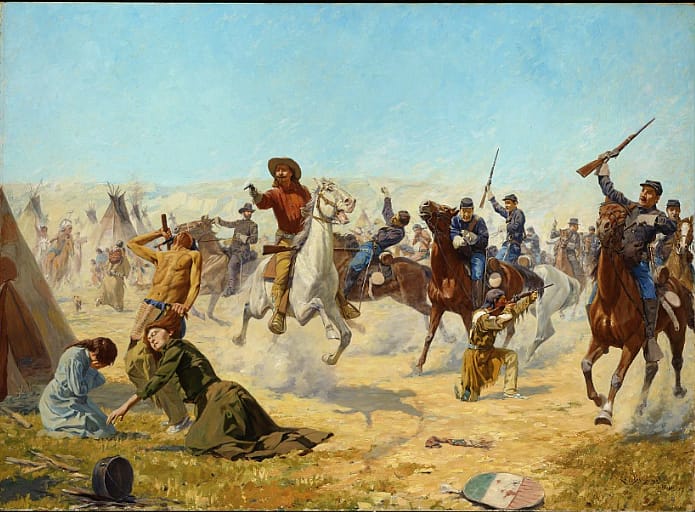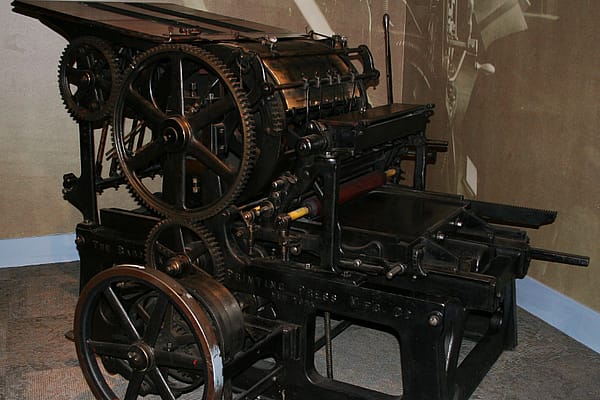
Story Behind a Painting
This article was originally published in a winter 1977 Buffalo Bill Center of the West newsletter.
A bugle-blowing cavalry charge to rescue two damsels in distress on July 11, 1869 served as the inspiration for a painting by Charles Schreyvogel which is part of the permanent collections at the Buffalo Bill Center of the West.
William F. Cody (1846-1917) was chief scout on that day, and Schreyvogel (1861-1912) was just a kid in New York with dreams of the West. Years later they met on the grounds of Buffalo Bill’s Wild West and developed a mutual admiration.
Unlike most skirmishes between cavalry and Native Americans, the one at Summit Springs, Colorado had all the elements of a Hollywood scenario. A daring Cheyenne leader, Tall Bull, had been raiding in western Kansas and Colorado. In addition to an array of stolen horses and mules he also had two women captives when he made camp at Summit Springs.
Pursuing him was several companies of the 5th Cavalry under the command of General E.A. Carr. According to the regimental historian, Cody succeeded in guiding Carr and his troops into an excellent position, in broad daylight, without alarming the encampment. At 2 p.m. the fight began.
One of the hostages was killed and the other wounded before the troopers reached them. In the Wild West, reenactment and in the painting, Cody is represented as being at the rescue site for the critical moment, but there seems to be no evidence that he ever personally claimed to have had a principle role in that part of the fight although he distinguished himself in other ways.
Schreyvogel’s biographer, James D. Horan, indicates that the painting was based on accounts given to the artist by Cody and was consistent with the version presented to Wild West audiences. That it does bear a resemblance to the scene as played in the Wild West is borne out by a documentary film of the show made in 1908.
In 1907 while painting The Summit Springs Rescue, Schreyvogel was a frequent visitor to the show grounds. Cody apparently commissioned the work, paying a portion of the price with stock in a mining company, but painted a Sioux tipi delivered to the artist during this period may have been part of the deal as well.
Buffalo Bill hung the painting in the Irma Hotel where it remained until 1964. It then came to the museum as part of the bequest from the estate of Pearl C. Newell who had bought the hotel following Mrs. Cody’s death in 1924.
Written By
Michaela Jones
Michaela, a Cody, Wyoming native, is the Centennial Media Intern at the Center of the West for the summer of 2017. She recently graduated from the University of Wyoming with a bachelor's degree in English and minors in professional writing and psychology. She's interested in writing for digital spaces, producing social media content, and learning about technology's impact on communication. In her spare time, she enjoys reading non-fiction, exploring the mountainous Wyoming regions, and spending time with family and friends.










